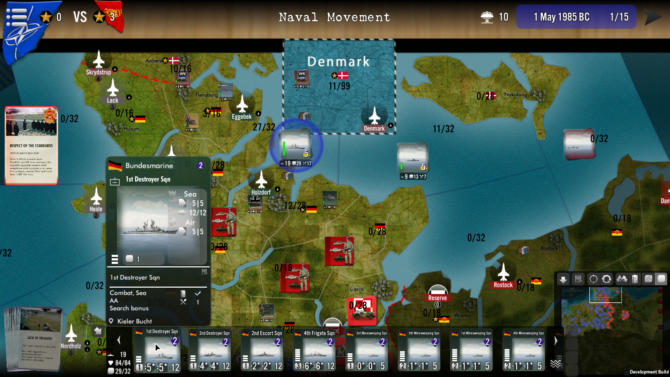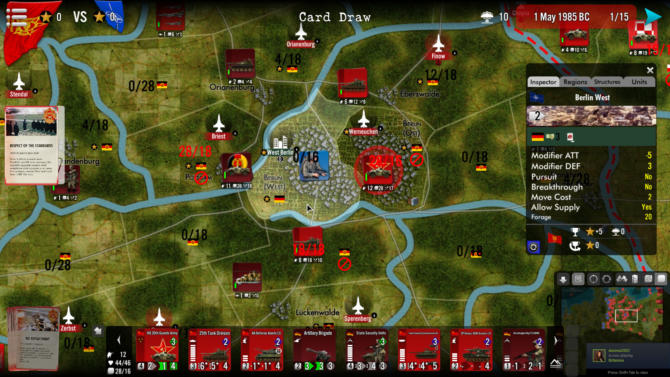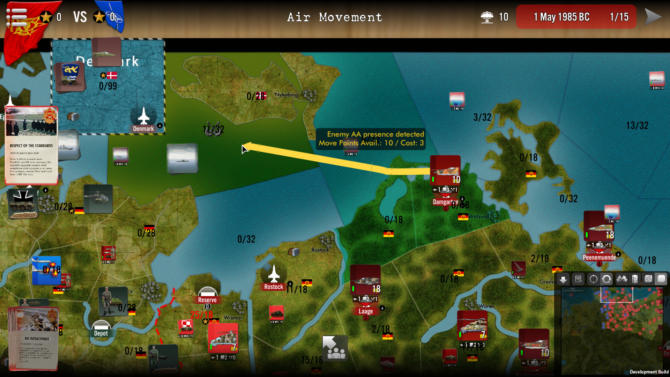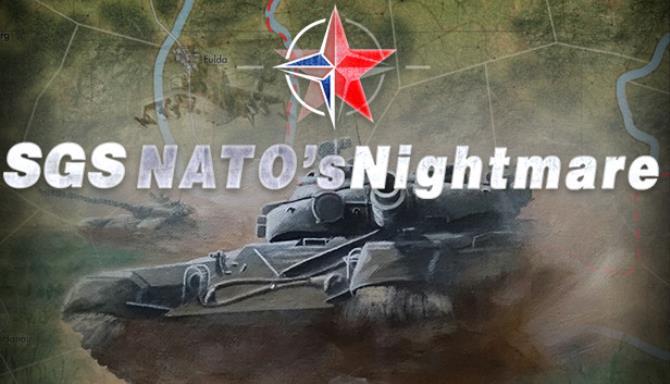Here you can download SGS NATO's Nightmare for free! On this page you will find information about SGS NATO's Nightmare and how you can download the game for free. Here you get the direct link (from different filehoster) or a torrent download. The link to the free download can be found at the bottom of the page.
NATO’s Nightmare
The game explores the possibility that the so-called Cold War turns hot around 1985, on one of the most emblematic front, Germany.
The starting assumption is that Gorbachov loses power to a group of hardliners who decide it is time for the Soviet Union (and its Pact allies) to strike first, while they still enjoy superiority in numbers and surprise. The fear that the current advantage will vanish over time and they know they can’t win the new technological arms race launched by the West. On NATO’s side, such an attack would for sure be the nightmare everyone fears, but the situation is slightly better than in the 1970’s, when the advantage in morale, equipment and preparation was much bigger in favour of the other side.
The Scenarios
The goal of the game is to explore different cases, from small engagements in limited sectors of the front to complete campaigns covering half or the whole map. The game will offer:
• FAR 1985: a 5-turns scenario exploring the Soviet invasion of Bavaria after the fall of Austria, and the reaction of NATO’s Force d’Action Rapide (FAR)
• Fulda Gap: a 4-turns scenario covering the expected Soviet breakthrough through the Fulda gap towards the Rhine and Frankfurt
• Austria Invasion: a 6-turns scenario dealing with the invasion of neutral Austria by the Pact
• Fall of Denmark: a 6-turns scenario aimed at exploring the northern part of the conflict with the objective of taking Denmark out and closing the Baltic to NATO.
• BAOR 1985: a short 1 month (15 turns) campaign covering the northern part of the war, in the North German plain, with Soviet, Poles and East Germans against British, West Germans and dutch-Belgians.
• CENTAG 1985: a short 1 month (15 turns) campaign focused on Central and Southern Germany, from Fulda to Bavaria
• Nato’s Nightmare Campaign: the whole war (30 turns), two months starting in May 1985.
All turns in the various scenarios and campaigns above represent 2 days.
One player represents the Warswa Pact, mostly the Soviet Union and its Easteran European Communist allies, and the other plays NATO, comprising forces from the USA, Canada and most Western Europe nations (and possibly neutral Austria if invaded).
- The Pact has have numerous land and air forces at the start of the game, and its forces are really impressive, but it is lacking the means to sustain the offensive effort over a too long period of time, not only in the field, but also economically and politically. It must hit fast and win quickly.
- NATO must first hold desperately against the initial invasion, waiting for its reinforcements to alter the course of events. The aerial and technological superiority, as well as its logistical and economic might are important and can compensate for the lower numbers. Unless the initial loss in troops and territory are too big.
Scale
The game scale is at the brigade or division level for land units of both sides, with smaller units (e.g. armor, AA, EW, special forces or engineering assets) beign also present. Air units are in the form of squadrons. Naval units are also present, limited to the Baltic sea sector. Other items such as fortifications, minefields, HQ’s, logistical depots or vehicles, or even refugees and stragglers are also present in good numbers.
The map covers all of West Germany, the Benelux, Eastern France, Austria, Czechoslovakia, East German and Western Poland. Parts of Denmark, the Baltic Sea, Italy, Hungary and the Soviet Union are also presented (through offmap boxes). All natural types of terrain are present, with a difference showing the different levels of development in that part of Europe and its impact on military operations.
Players and Sides
Players will not only enter detailed military operations and battles (both on land and in the air) in the central sector of Europe, but also live some of the military, political and diplomatic aspects of the war elsewhere (the Balkans, Scandinavia, Middle-East, Far east), with most of those being handled through the play of cards or via the occurrence of events.
In the military field, you have to handle troop movements and maneuvers, organization of air, HQ and all kind of assets and supports, breathroughs, exploitations, build-up of logistical networks or defensive positions. Many other aspects, such as special forces, chemical warfare, possibly tactical nuclear strikes, as well as popular resistance, training of troops, recompletion of forces, management of unit rotation or behind enemy-lines warfare are also represented.
Basic and Advanced Scenarios
Each of the scenarios will come in two versions: basic and advanced. In the basic ones, units number will be limited to the main ones (divisions and brigades, a few assets, air squadrons or ships flotillas) and the gameplay will be facilitated by the lower density. This will help players who want to discover the game and its environement without going into too much complexity. In Advanced versions, dozens of new units are added (the game will have 2,000+ of them) to give all the chrome and flavour required by veteran players, who want to see how every details of modern warfare (assets, electronic warfare, doctrines) are covered.
Look
Each unit has its own unit look, with nicely drawn and accurate original pictures of soldiers, vehicles, planes or ships. For those players who love the complete NATO’s atmosphere, an alternative look of units with the current NATO symbology will be available too.
Duration
Variable according to scenarios, from a few hours for the shortest scenarios to 100+ hours for the full campaign in Advanced version.
Balance
No side is specifically advantaged overall, but the balance of power is shifting at some point (advantage to Pact at start, NATO gains upper hand later). Both are playable and enjoyable once you capture the essence of their specific strong points and weaknesses. Detailed scenario information sheets are here to help you get into the game.



- OS: Windows 7/8/10+
- Processor: 2.5 GHz Intel Dual Core or higher
- Memory: 8 GB RAM
- Graphics: 512 MB NVIDIA GeForce 9600 or equivalent
- DirectX: Version 9.0
- Storage: 2 GB available space
- Sound Card: DirectX Compatible

